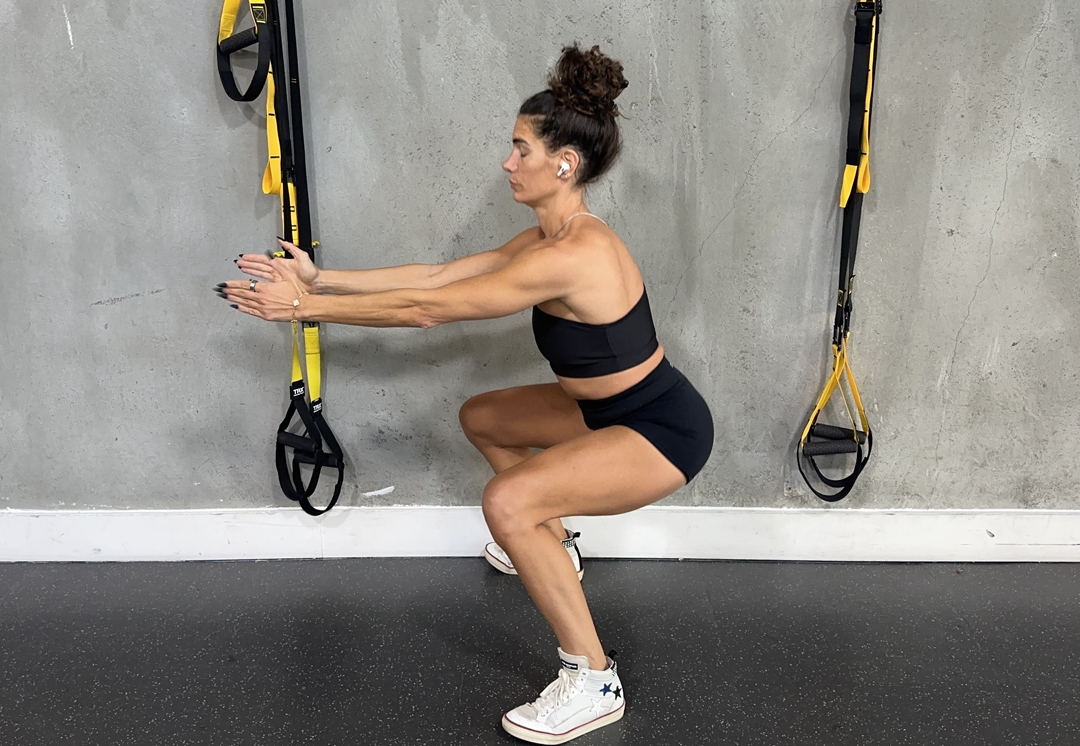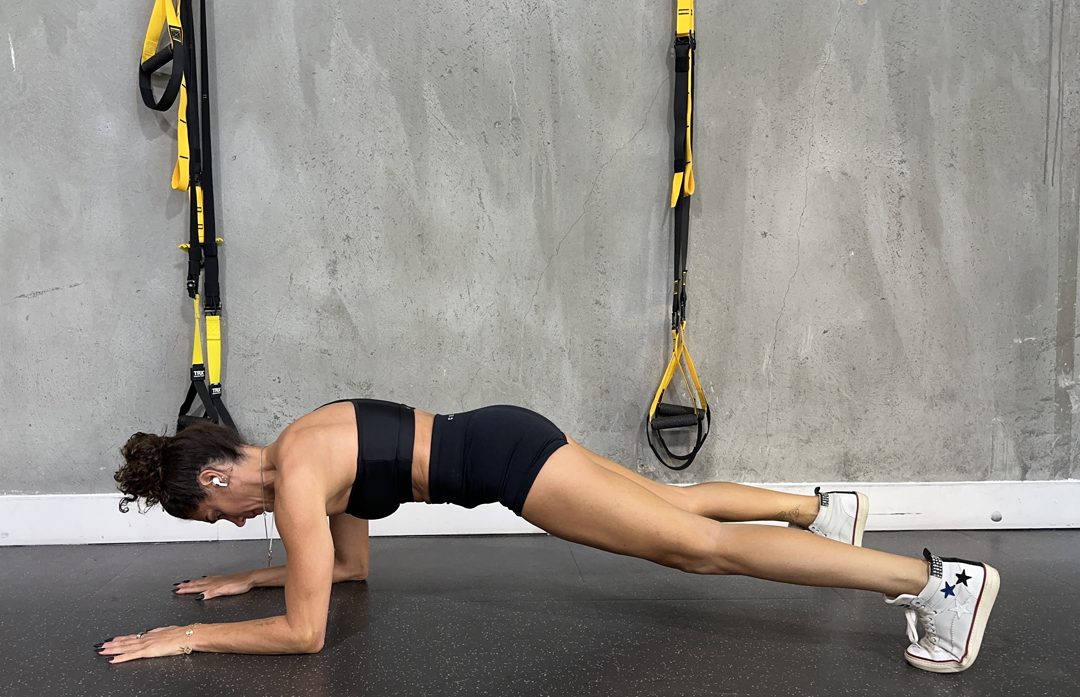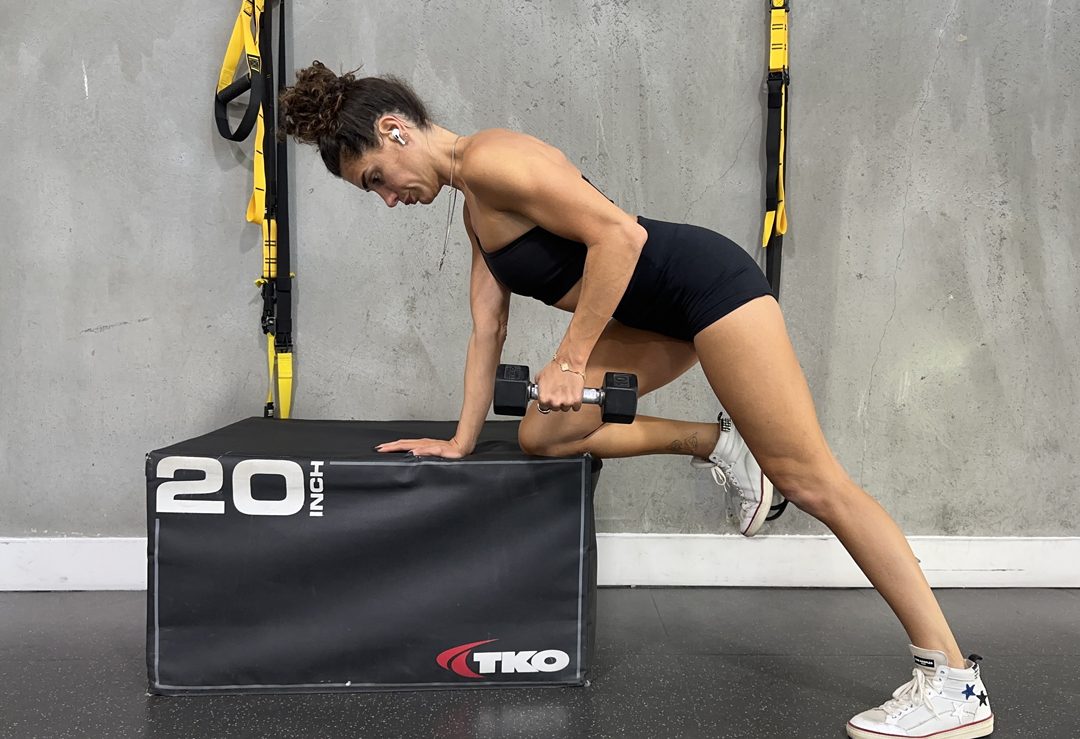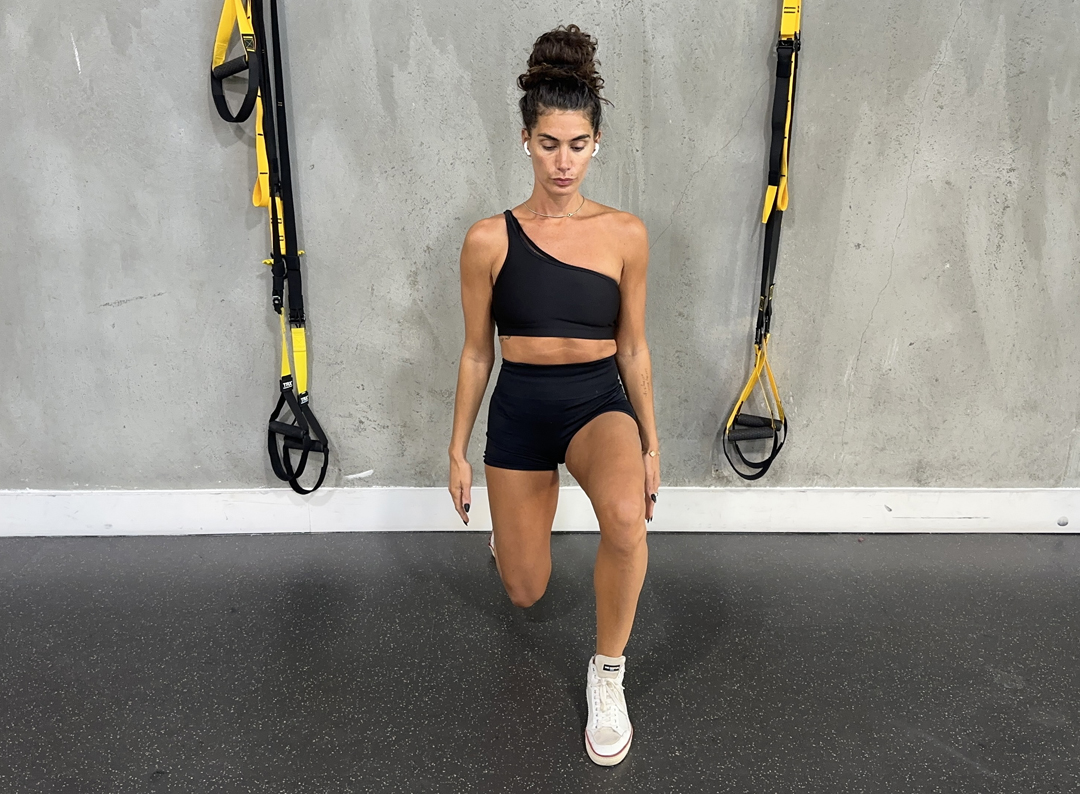From Coach Amanda Hart
Let’s talk strength training after menopause. The focus is often on weight loss, but we should prioritize building strength, improving bone density, and creating sustainable healthy habits. These are the cornerstones of well-being at this stage of life, with improved body composition being a beneficial side effect rather than the primary goal. Strength training effectively addresses these needs, strengthening the body and enhancing your overall quality of life.
Why strength training is critical after menopause
Menopause brings hormonal changes that lead to reduced bone density (osteoporosis), muscle loss (sarcopenia) and a slower metabolism. Strength training directly addresses these changes by providing:
- Stronger bones: Weight-bearing exercises stimulate bone growth, reducing the risk of fracture.
- Increased muscle mass: Building muscle boosts metabolism, helps with weight management and increases energy.
- Improved balance and coordination: Strength training enhances stability, reducing the risk of falling.
- Improved mood and cognitive function: Exercise releases endorphins, improving mood and possibly cognitive function.
- Better sleep: Regular activity contributes to better sleep quality.

Sample workout routine (for beginners):
This routine is tailored to your fitness level. Always consult your doctor before starting any new exercise program. Aim for 2-3 sessions per week with rest days in between. As you get stronger, gradually increase the weight, reps, or sets each week. This is called progressive overload. Ideally, you want to increase your weight by 2.5 kg every 2-4 weeks. If increasing the weight isn’t an option, remember that you can also increase the reps to continue to challenge your body. Be sure to re-evaluate your program every 4-6 weeks and consider working with a certified personal trainer like myself for personalized guidance.

- Warm-up (5-10 minutes): Light cardio such as jogging, brisk walking or cycling works well here.
Note: Perform exercises (3 sets of 10-12 reps each. Make sure you choose a weight that is hard enough for you with 12 reps).
- Sumo Squats: Works legs and glutes. Focus on proper form by keeping your back straight, chest up and feet out from your hips. Then lower until your thighs are parallel to the ground. Lower the hips to ninety degrees, then return to a standing position. This is a representative.
- Negative push-ups: It works the chest, shoulders and triceps. Keep a straight line from head to heels (or knees). Lower your chest to the ground and come back up in one quick motion using your knees. For beginners, you can do wall push-ups instead of negative push-ups.
- Bench or Chair DB Row: trains back and biceps. Keep your back straight and pull the weight toward your chest, squeezing your shoulder blades together. Make sure your chest is parallel to the bench. You can also do this exercise standing up with a band.
- Plank: Works the core muscles. Maintain a straight line from head to heels, engaging your core. Keep the movement on your forearms and brace your core by rolling your pelvis down.
- Forward drops: Works legs and glutes. Keep your front knee behind your toes and your back straight. Walk forward keeping your chest upright and keep your balance intact. If walking is too difficult, stay still and bend your knees to the ground while standing back.

Cooling (5-10 minutes): It is recommended to stretch like a cobra or pigeon pose. Hold each stretch for 20-30 seconds.
Dietary Recommendations
Focus on a balanced diet rich in protein, calcium and vitamin D to support muscle growth and bone health. Fiber intake is also extremely important for postmenopausal women, and you should aim for 20-25 grams of fiber per day to maintain proper gut health and help with weight management.
Additionally, adequate hydration is crucial for postmenopausal women. Individual needs may vary, but you should aim for 2 liters of water per day. Remember, you should prioritize nutrient density over strict calorie counting and include 3-4 oz. lean protein source, ½ cup of complex carbohydrates and 1-2 servings of green vegetables at each meal.

Sample Day of Eating (Focus on portion sizes and food groups):
- Breakfast: Greek yogurt (1 cup) with berries (1/2 cup), chia seeds and almonds (a handful).
- Midday snack: Fruit (apple, banana or orange) with ¼ cup walnuts (or a small handful).
- Lunch: Large salad with grilled chicken or fish-like sardines (4-6 oz.), mixed greens, assorted vegetables, and a light vinaigrette.
- Afternoon snack: 1 hard-boiled egg and 6 whole-wheat crackers or ½ cup cottage cheese with a sliced peach.
- Dinner: Baked salmon (4-6 oz.) with 1 cup roasted vegetables (broccoli, carrots, Brussels sprouts) and ¼ cup quinoa.
- Evening snack (optional): A handful of berries or 2-3 squares of dark chocolate (70% cocoa or more).
Remember to aim for adequate protein intake (around 100g per day or 0.8-1g per kg of body weight, although this varies from person to person). Good sources of protein include lean meats, poultry, fish, eggs, dairy, beans and lentils. Some of my favorite complex carbs are sweet potatoes, brown rice, fruit, and quinoa. One should aim for 100-145 grams of carbohydrates per day. Try to eat a complete, balanced meal with plenty of protein and at least one serving of carbohydrates, especially in your pre- and post-workout meals!

Stress management
Prioritize stress management to optimize your training and get the best possible results. A practical place to start managing stress starts with your sleep! You should aim for 7-9 hours a night and practice stress management techniques such as meditation, yoga or breathing and cultivating social connections. These factors contribute greatly to your overall well-being, which will ultimately support your strength training routine and physique. When you master all these pillars of your health, the result will be improved physical strength, body composition, and a deep sense of well-being, confidence, and vitality at this beautiful stage of life.
Sources:
https://my.clevelandclinic.org/health/diseases/21837-postmenopause
https://www.webmd.com/menopause/health-after-menopause
https://www.sciencedirect.com/topics/medicine-and-dentistry/postmenopause
https://www.healthline.com/health/menopause/postmenopausal-health

About the author:
Amanda Hart has 16 years of experience as a certified trainer and nutritionist. Her work focuses on addressing health from a holistic perspective, combining strength training with sustainable routines, biohacking and the nervous system. She is certified through NASM and works with clients online and in person.
Visit her website at www.amandahartwellness.com to schedule a FREE consultation with her today!
Refusal
The Content is not intended to be a substitute for professional medical advice, diagnosis or treatment. Always seek the advice of your doctor or other qualified health care provider with any questions you may have about a medical condition.
